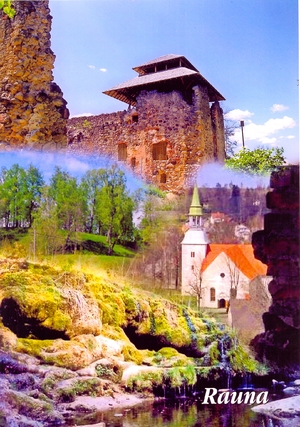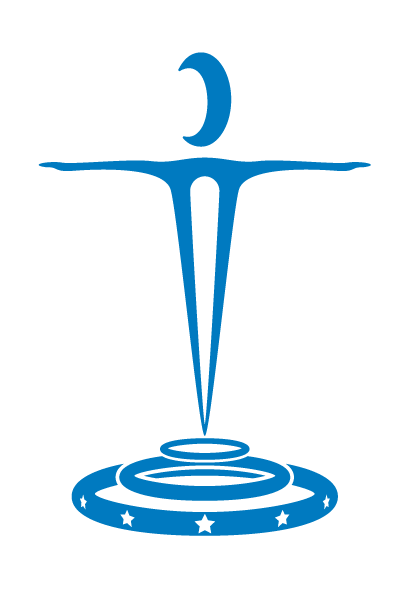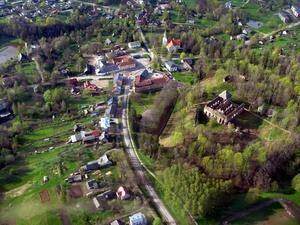IC: Please tell us a little bit about your region. Why is Rauna municipality a good place to live and what are your favourite places?
Rauna municipality consists of two communities: Rauna and Drusti. The total area of the region is 3019 square kilometres with about 4000 inhabitants. The most inhabited place and administrative centre of the region is Rauna. There are several municipal institutions of Rauna Region like Rauna Secondary School, Drusti Basic School, Rauna Municipal Library, Rose Library, Drusti Library, Gatarta Library, Drusti Homeland Museum, Gatarta Old People’s House, Drusti Municipal Administration. The Youth Centre was inaugurated in September 2011. There are many aspects that make Rauna a good place to live such as its central location, its cultural heritage and many more aspects that I listed a the end. My favourite places unequivocal are Rauna Castle ruins and the country park “Raunas Staburags”, a park with sandstone formations on the coast of the river.
IC: What are the strengths and what are the biggest problems your region is facing?
Our strengths are our historical heritage, beautiful nature, our geographical location and our people of course. The biggest problems for our region I think are the same as every other region in Latvia is facing – deficiency of investors, deficiency of jobs which akin a situation when our people are forced to leave.

IC: How did you learn about the IC Network and why did you decide to join it?
For many years our good neighbours Vecpiebalga and Amata are members of the IC Network. Our partnership with those municipalities gave us the opportunity to participate in some IC Network activities although we were not a member then. Through this participation we understood that IC Network is an amazing possibility to exchange experiences and to get in touch with potential partners from many different countries. That was the main reason why we decided to join.
IC: What are your expectations according to your IC membership?
Our main aim is to make our municipality more attractive. A big help to achieve this aim are the experience of other members and the exchange of innovative ideas.
IC: What kind of projects have you been involved in and what did you get out of it?
We have been involved in many basic service and infrastructure projects. Through those projects we improved our water systems, our schools, our cultural and administrative buildings, created several attractive places for tourists and our people. We have been involved in Europe for Citizens’ project with Zarasai (Lithuania) and Marmande (France) in the field of social work and local culture. Also in HEPROGRESS project, as a result we achieved analyses of the situation in our municipality in sphere of healthy lifestyle and recommendation how to gain better results.
IC: Do you have ideas for future projects?
We have some ideas in the range of cultural heritage. For example: cultural heritage in tourism, our virgin nature and healthy lifestyle - as main attracters. We also have ideas how to develop social sphere to give more options to our people.
IC: Do you maintain relationships with partners in other regions or countries?
We maintain relationships with city in Germany – Sessen, Lithuania – Zarasai in social sphere and now we are on the way to form friendship with a municipality in Norway Ostfold region – by the way, the starting point for this potential friendship is the result of the last IC Network meeting in Suwalki, Poland.
IC: What is your slogan or motto?
Our motto – Rauna region attracts, invites and surprises you.
Evija Zurge, Chairman of Rauna municipality
More facts and about Rauna:
Historic Aspect:
In Historic texts the name of Rauna Castle was first mentioned in 1381 but the historians admit that it was built before this date. In 18th century literature it is said that the castle was built in 1262 as an initiative of Riga Archbishop Albert II and it had the role of the most important centres of archbishopric. Whereas in 16th Century written Rauna Epigram the building of the castle is said to be done by Archbishop Johan I, who governed from 1273 to 1284. From 14th to 16th Centuries it was one of the Residencies (Rownenborgh, Ronnenburg) for Riga Archbishops and one of the most important power centres of the Middle age Livonia and it probably had the status of the town.
Geographic Aspect:
Our region is located in central Latvia in Vidzeme, on the banks of the small river with the same name Rauna and on the crossroad of at least five bigger roads: 23 km from Cesis and Smiltene, 30 km from Valmiera and 100 km from Latvian Capital Riga.
Religious Aspect:
Rauna Evangelic Luther Church was built the same year as Rauna Castle in 1262 as the initiative of Riga Archbishop Albert II. Since 16th Century the Evangel Lutheran Parish has been active here. Drusti Lutheran Church is built in Classicism style in 1837. Rauna Rome Catholic Church has not the two traditional gothic towers. It is the place for prays which is adapted for the needs of the church. Rauna Catholic Parish has been active in it.
Culture and tourism aspect:
The Latvian national culture traditions have always been important in Rauna Region. There are numerous amateur ensembles who keep these traditions: Women Vocal Ensemble „Nianse”, Rauna Municipal Mixed Choir, Rauna Amateur Theatre, Womens’ Ensemble „Atvasara”, Children Folk Dance Ensemble „Cinitis”, Amteaur Theatre „ Lerums”. Each year there is the Festival „Rodam Raunas novada” (Finding in Rauna region) dedicated to one product (there was milk, honey, strawberry, this year it will be fish) as important product of the local industry. With the support of Rauna Region Council the Festival is organized by the local active people who gathered farmers, craftsmen, amateurs and artists with the purpose to show all Festival participants and visitors the diverse meaning of each years product in our lives. This Festival gathers the region’s people as well as tourists to show the Rauna Region uniqueness and diversity.
Tourists are attracted by diverse rest opportunities and interesting sightseeing points. They can visit natural beauties, architectural monuments and historical places. The historical past of Rauna region and its beautiful landscapes are reasons for tourists to come back.
Entrepreneurial Aspect:
The most developed entrepreneurial fields of Rauna region is farming and agriculture. At this moment there are more than 70 companies active in agriculture. There are active companies which use their potential in industry and service. The biggest Region companies are „Raunas Ceplis” http://www.raunasceplis.lv/ [ceramics workshop] , „Raunas lauktehnika” http://www.rl.lv/ [metal processing] , “Dagra” http://www.raunasbrugakmens.lv/, „Raunas Bruģakmens” http://www.raunasbrugis.lv/ [cobblestone production], SIA “Siera ražotne”, http://www.sierarazotne.lv/, [food production], “Jaun – Ieviņas” www.jaun-ievinas.lv [guest house, wild horses], “Pļavnas” www.plavnas.lv [guest house, beautiful place for celebrations and for rest at the nature] and others.

![Evija[1].JPG](https://img9.custompublish.com/getfile.php/2542071.1169.btecyvvvyv/Evija%5B1%5D.JPG)
